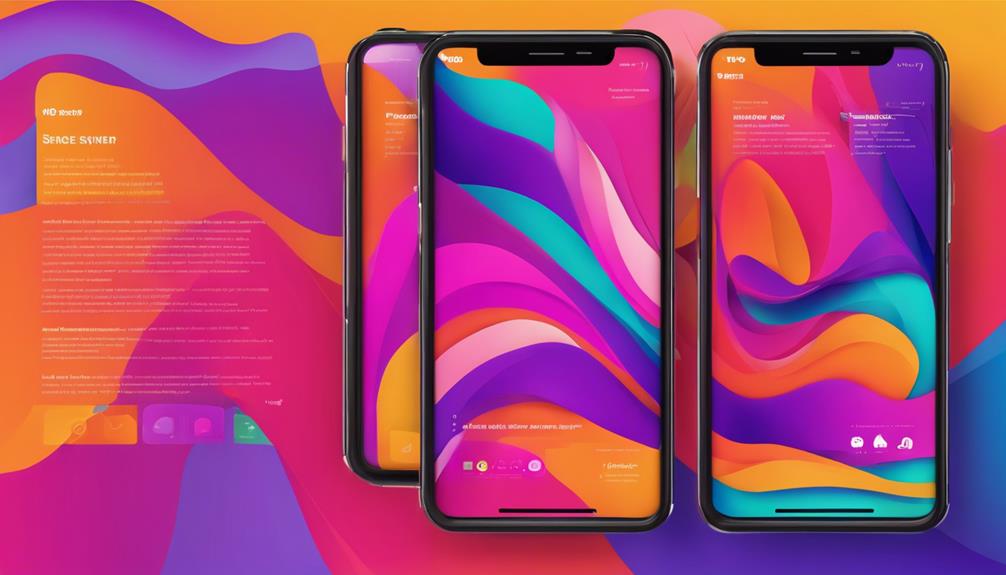When you're aiming for mobile SEO success, evaluating website usability becomes crucial. It's not just about having a mobile-friendly design; it's about ensuring every user can navigate your site effortlessly. You need to consider how fast your pages load and whether your design truly adapts to different devices. Are your navigation menus intuitive, and do your buttons accommodate the average thumb size? Don't forget accessibility features that make your site usable for everyone. As you explore these elements, you'll discover how they influence both user satisfaction and search engine rankings in unexpected ways.
Key Takeaways
- Ensure responsive design for seamless viewing across all screen sizes and orientations.
- Optimize page load speed to meet user expectations and improve mobile SEO rankings.
- Simplify navigation with concise menus and intuitive structure for easy access.
- Enhance touchscreen functionality with adequately sized touch targets and spacing.
- Prioritize accessibility for visually impaired users through screen reader compatibility.
Understanding Mobile Usability
Mobile usability is all about creating an intuitive and seamless experience for users navigating your site on their smartphones or tablets. You want your visitors to feel at ease, not frustrated, as they explore your content.
Start by ensuring your website's design is responsive. This means your site automatically adjusts to fit any screen size, making text readable without pinching and zooming. Clear navigation is crucial; users should find what they're looking for with minimal effort.
Think about the touch experience. Buttons should be large enough to tap without hassle, and spacing between links should prevent accidental clicks.
Pay attention to how text and visuals are displayed. Is the font size legible? Are images loading properly? These aspects directly impact how users perceive your site.
Don't forget about accessibility. Ensure those with visual impairments can navigate your site easily with screen readers. Your approach should be inclusive, catering to all users.
Analyzing Page Load Speed
As you focus on providing a seamless mobile experience, it's important to consider another key factor: page load speed. In today's fast-paced world, users expect websites to load quickly, especially on mobile devices. A slow-loading page can frustrate users and lead them to abandon your site, impacting both user experience and search engine rankings.
To ensure your site loads swiftly, start by evaluating your current speed using tools like Google's PageSpeed Insights or GTmetrix. These tools give you a clear picture of what's slowing down your pages.
You'll want to minimize file sizes and optimize images without compromising quality. Compressing images and using modern formats like WebP can make a big difference.
Also, consider enabling browser caching, which allows returning visitors to load your pages faster by reusing stored data. Another tip is to reduce the number of HTTP requests by combining files like CSS and JavaScript.
Assessing Responsive Design

When striving for an optimal user experience, it's crucial to frequently assess your site's responsive design. Think about how users interact with your site on different devices. A truly responsive design ensures seamless transitions and maintains functionality across various screen sizes. You want your content to be easily accessible, no matter if someone's using a smartphone, tablet, or desktop.
Start by examining your site's layout. Does it adjust smoothly when you resize the window? Responsive design isn't just about fitting content to a screen—it's about maintaining usability. Users should navigate your site effortlessly, without pinching to zoom or scrolling horizontally.
Test your site on multiple devices and orientations to ensure consistency.
Check images and buttons. Are images scaling properly without losing quality? Ensure buttons are large enough to tap and have adequate spacing. Remember, mobile users rely on touch, so precision is key.
Pay attention to text readability. Your typography should remain legible and aesthetically pleasing across all devices. Avoid tiny fonts and ensure there's enough contrast between text and background for easy reading.
Evaluating Navigation Simplicity
To ensure your users enjoy a smooth experience, through and through, evaluating navigation simplicity is essential. When users land on your website, they should feel at ease, not overwhelmed.
Think about how easily they can find what they're looking for. A clean, intuitive menu structure helps users navigate with confidence. Keep your menu concise; don't bombard them with options. Prioritize key pages and group related content logically.
Consider your audience's perspective. If they're hunting for a product or information, use clear labels that speak their language. Avoid jargon and stick to universal terms.
Remember, the simpler the navigation, the quicker your users find what they need, leading to better engagement and satisfaction.
Visual cues can guide users efficiently. Use icons and contrasting colors to highlight important links or buttons, ensuring they stand out on smaller screens.
Test different layouts to see what works best. It's crucial to evaluate and refine based on user feedback. Dive into analytics to see where users struggle.
Are there pages with high bounce rates? These insights can help you tweak navigation, ensuring users leave your site feeling accomplished, not frustrated.
Testing Touchscreen Functionality

Having streamlined your site's navigation, it's time to focus on the tactile experience users have. Touchscreen functionality is crucial for keeping users engaged and satisfied. Start by ensuring that all touch targets, like buttons and links, are large enough to be easily tapped. Users shouldn't have to zoom in or struggle to hit the right spot. Aim for a minimum size of 44×44 pixels for interactive elements, making navigation seamless and frustration-free.
Next, test the responsiveness of your touch elements. Users expect immediate feedback, so make sure buttons respond instantly with visual cues, like a color change or slight animation. This reassures users that their action was registered.
Also, consider the spacing between elements. Crowded screens lead to accidental taps, which can frustrate users and drive them away. Maintain adequate spacing to enhance accuracy and comfort.
Conclusion
To ensure your website thrives in mobile SEO, focus on your users' experience. Embrace responsive design that adapts seamlessly to any screen size, ensuring fast page load speeds to keep visitors engaged. Simplify navigation and optimize touchscreen elements with well-sized buttons and clear labels. Prioritize accessibility, including screen reader compatibility, to cater to all users. By putting your audience first, you'll not only boost your search engine rankings but also enhance user satisfaction and loyalty.


Leave a Reply